Cut flower garden ideas – 16 expert tips to help you grow your own blooms
The experts outline the best cut flower garden ideas to help you grow your own flowers month after month (after month)
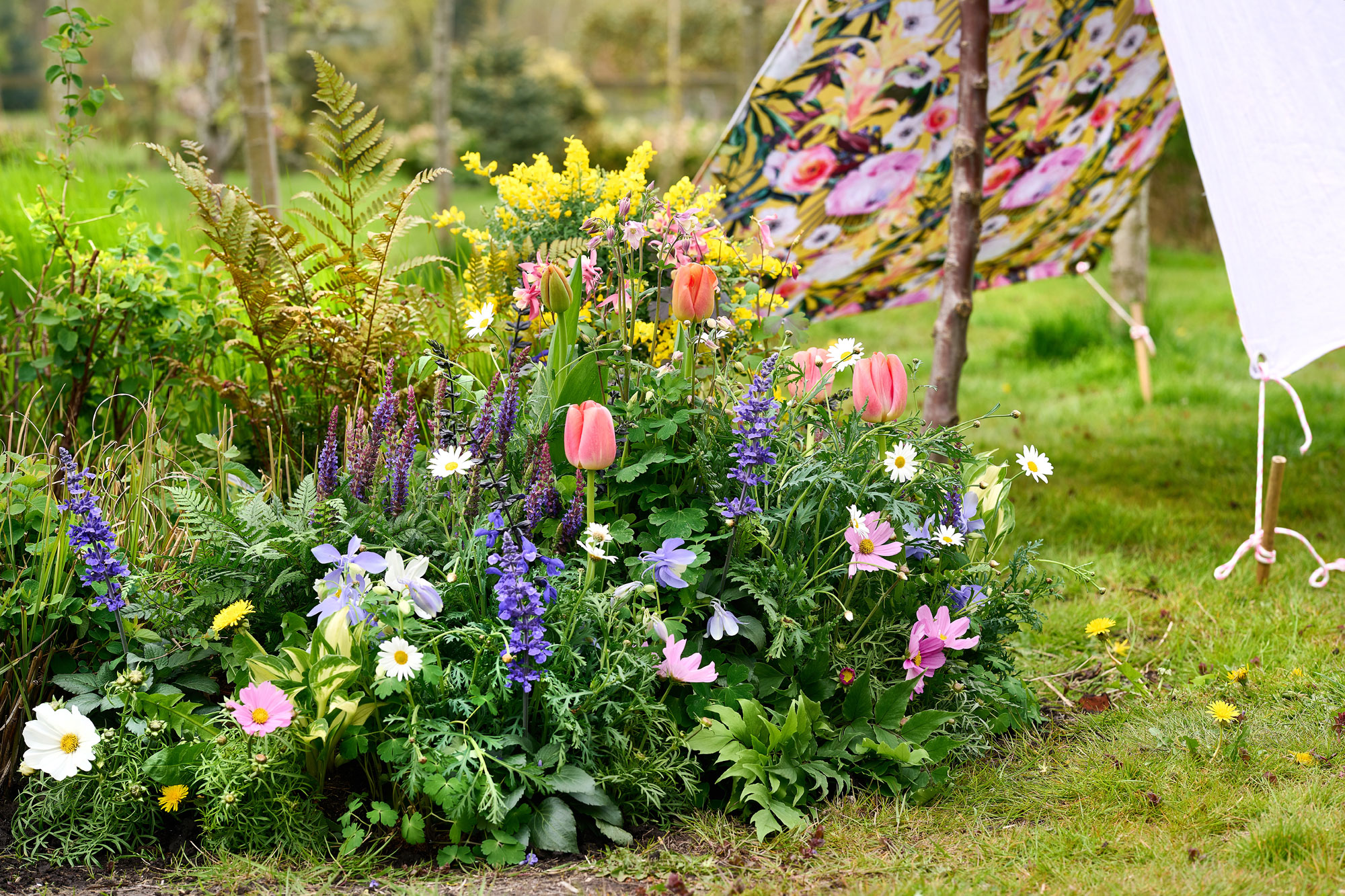
With the right cut flower garden ideas, you can have the space you've always dreamed of, bursting with color, variety and your favorite blooms. In fact, you can do so pretty simply with some of these tips, tried and tested by a range of experts.
Along with adding texture, rows of color and vases worth of flowers to your indoor and outdoor space, garden ideas for cut flowers are growing in popularity – and it's for good reason. 'Cut flower gardens are great for encouraging pollinators and insects into your garden, as well as being a great way to improve your mental health, by getting out into your garden to tend to your flowers,' says Natalie Plumbridge, Horticulturist at the Royal Horticultural Society Garden Wisley. 'From growing the plants yourself to harvesting and displaying them within your home, cut flowers are a lovely way to inspire you to garden.'
Growing a cut flower garden is also a quick-fire way to experiment with new plants. ‘Some may even surprise you,’ Natalie adds. ‘Another positive is that you will have unlimited bouquets within your home, which also make great personalized gifts throughout the year.’
Ready to get sowing? Discover our expert-approved tips on what to grow, how to choose the right spot and tricks to follow to ensure your flowers bloom around the clock.
16 cut flower garden ideas, approved by experts
1. Use successional planting
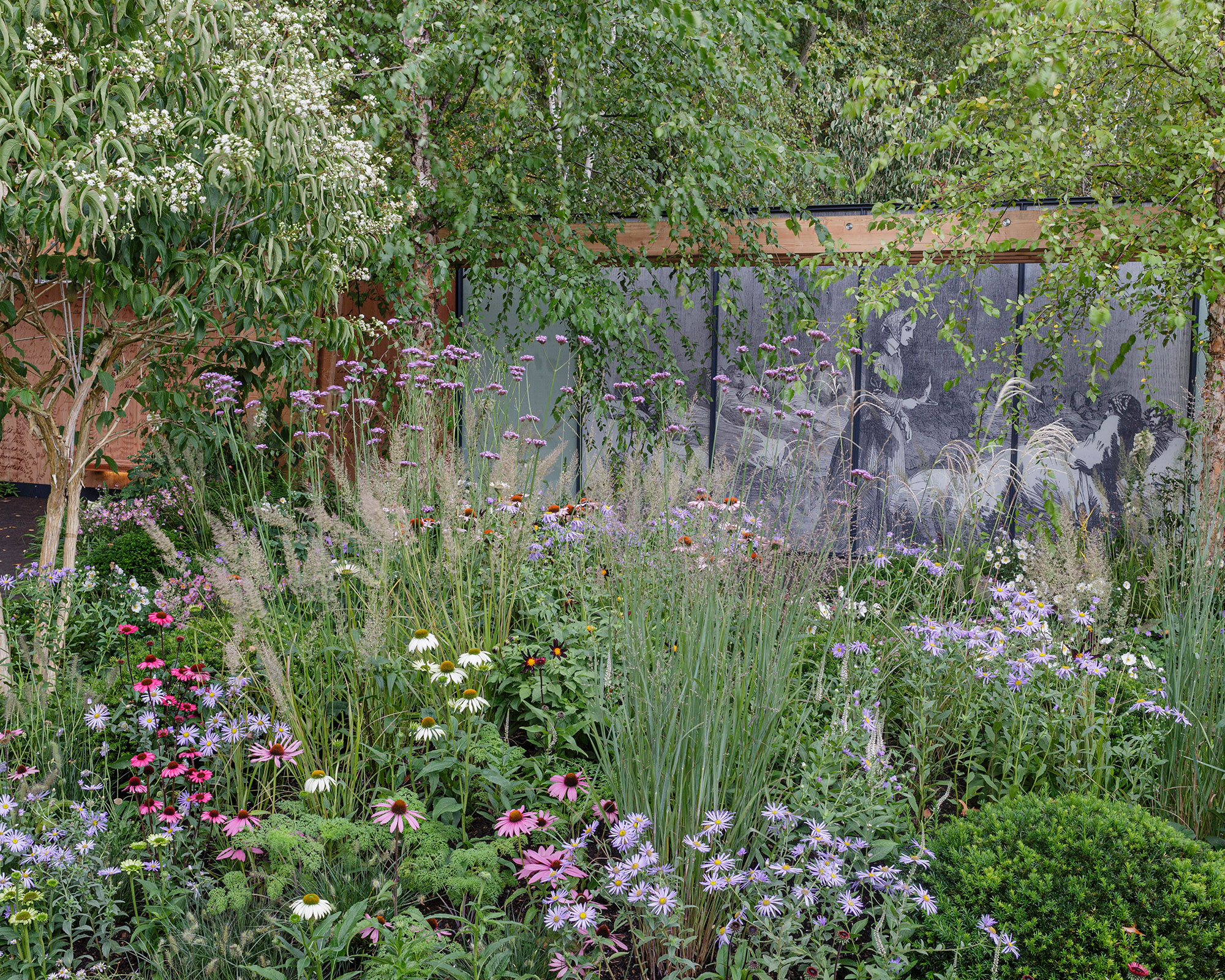
Topping the list of garden trends this year was successional planting. And by the looks of things, this type of gardening is here to stay. Successional planting involves sowing small batches of plants every few weeks rather than in one go. This is one of the best cut flower garden ideas because it ensures you’ll have something to look at all year round.
And, according to Natalie Plumbridge, Horticulturist at the Royal Horticultural Society Garden Wisley, successional planting is your key to creating a cut flower garden to be proud of. ‘One of the first things to consider when creating a cut flower garden is what plants are going to give you a succession of flowers throughout the year,' Natalie says. 'All this information can normally be found on the seed packet or plant label.’
2. Select plants great for pollination
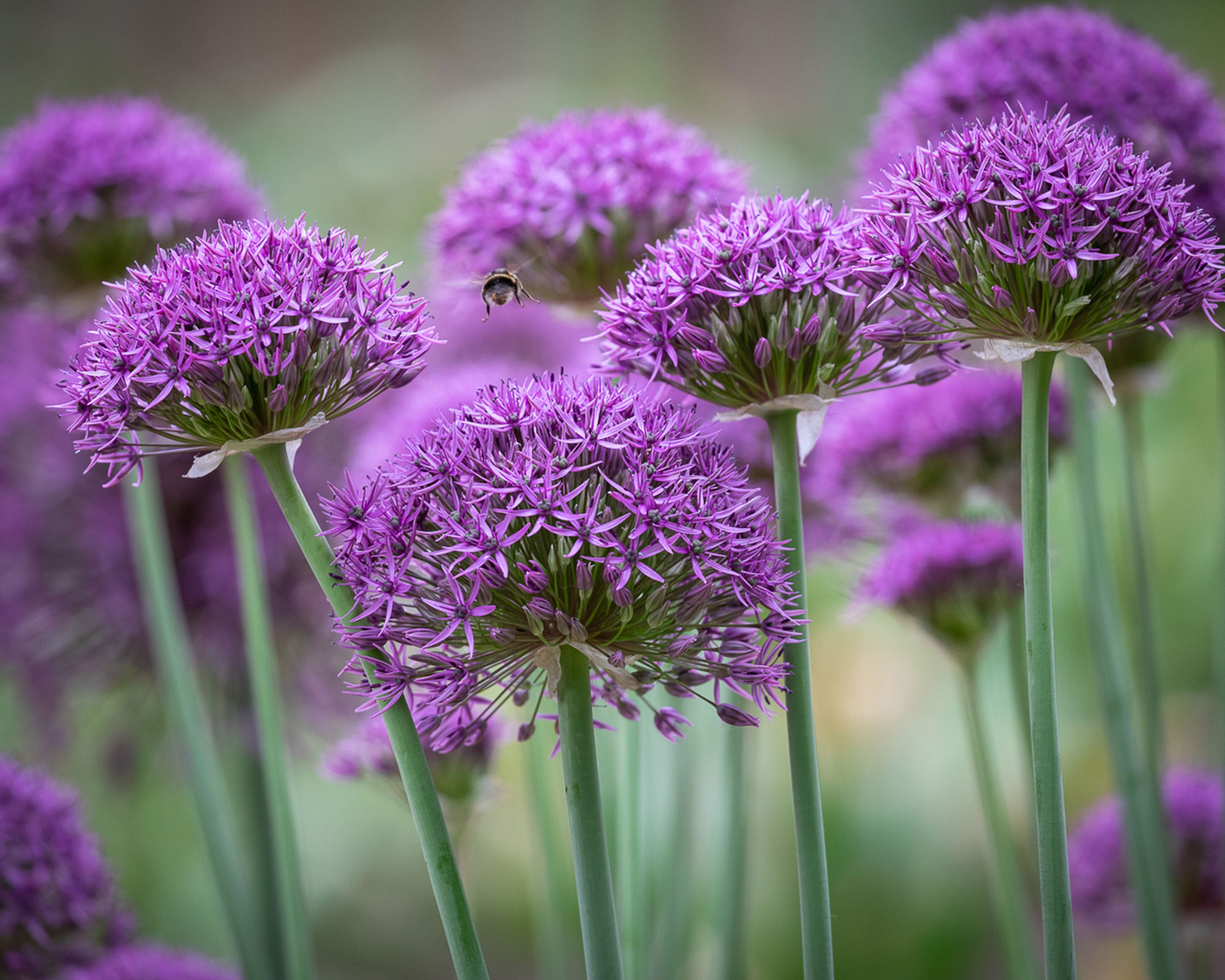
Biodiversity in any garden is always important. But this especially rings true when it comes to creating a cut flower garden. Why? Because this type of wildlife gardening in your space ensures every plant and insect works together in your outdoor ecosystem to maintain balance and support life.
The Livingetc newsletters are your inside source for what’s shaping interiors now - and what’s next. Discover trend forecasts, smart style ideas, and curated shopping inspiration that brings design to life. Subscribe today and stay ahead of the curve.
‘Another good thing to keep in mind would be selecting plants that are also great for pollinators,’ Natalie says. ‘As well as looking amazing in your home, plants are a great source of pollen for bees and attract a wide range of bugs and insects. Just look out for ‘Plants for Pollinators’ on the packets. This way, allocating a space for cut flowers can also help improve the biodiversity of your outdoor space.’
3. Opt for 'cut and come again' flowers
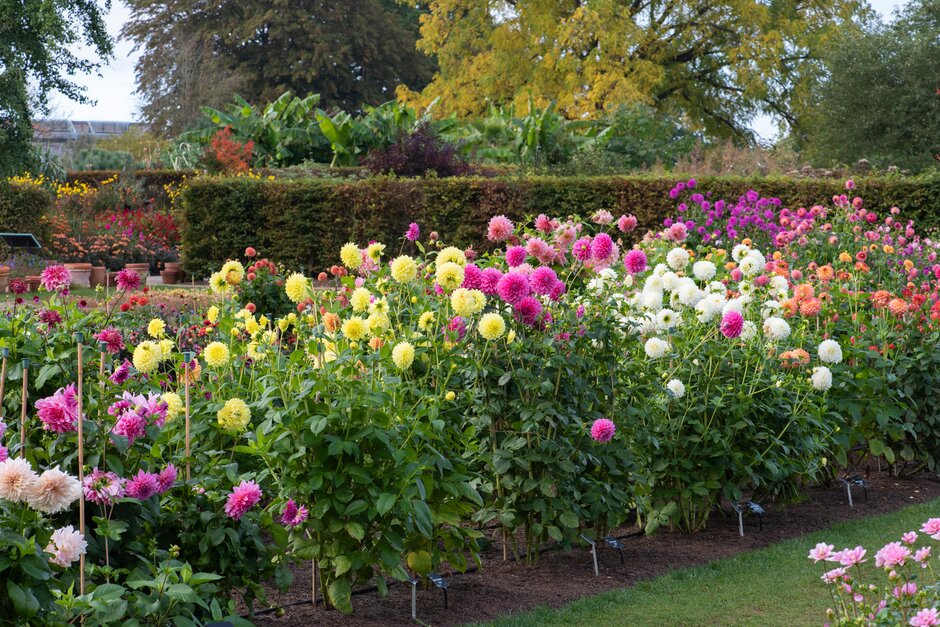
So, you’ve chosen flowers that will give you a succession of blooms and selected options that are great for pollination. What other flower bed ideas should your planting tick?
According to Natalie, you should include a range of flowers that ‘cut and come again’.
‘There are many flowers that are ‘cut and come again,’ Natalie explains. ‘This is where once the flower has been harvested, it will produce more if continually cut throughout the year. Some good examples are Zinnia, Cosmos, Dahlia, Static (Limonium) and Strawflower (Xerochrysum). All of these flowers, if harvested correctly, will keep producing flowers until the first frost. Having a few plants of each type ensures that you get a good succession of flowers to harvest over the year.’
4. Keep plants inside, until they’re ready
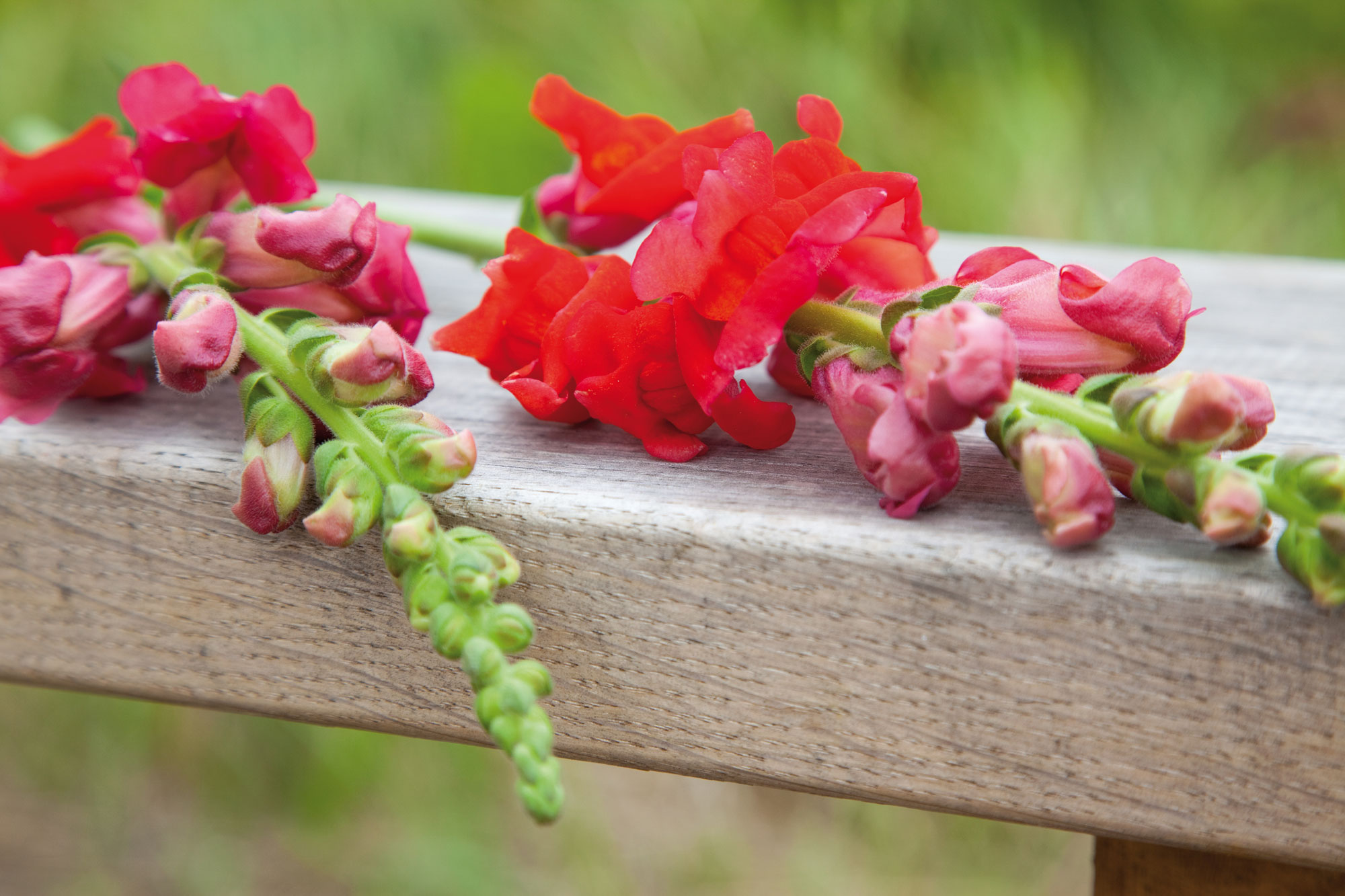
Plants are gentle creatures. While they’ll thrive outdoors if and when the conditions are right, you can give your florals a head start. One of the best ways to start a flower garden is to grow them indoors until they’re ready to take on the harsher weather.
'There are lots of great flowers you can grow from seed for cutting,' says florist Sally Bastard, of Sweet Pea Rosa. 'During March and April, I start seeds such as cosmos, sweet peas and snapdragons. Sow them into seed starter compost in trays and keep them inside until they are getting strong enough to go outside as the weather can be very changeable during these months.'
5. Choose hard-working flowers
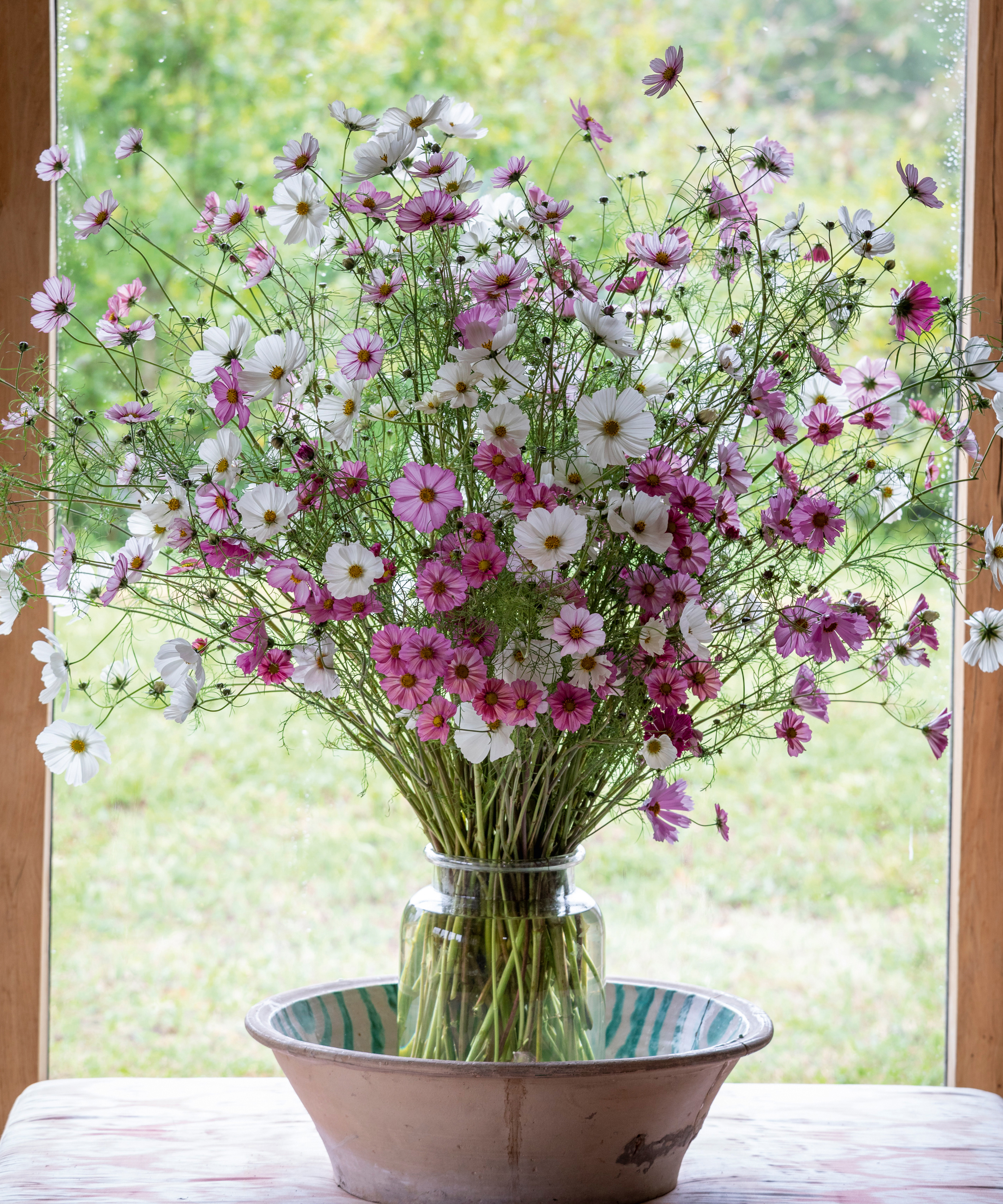
There is nothing better than looking out on your garden to see your blooms, blooming. However, another way you can ensure your flowers grow to their full potential is by choosing hard-working flowers.
‘I always grow cosmos and can’t recommend it enough,' Sally explains. 'There are some beautiful varieties and they are super easy to grow and they keep coming the more you cut. Cosmos will flower right through to October sometimes so is very good value.'
Another hard-working flower is the cornflower. According to Sally, cornflowers are very easy to grow as you can sow these seeds straight into your beds. While she would also recommend calendulas.
"It's a brilliant flower,' Sally notes, 'Available in lots of sunset tones and is edible too. It is hardy so can withstand some cold temperatures, which means it can be sown in the autumn months and overwintered in a glasshouse or mini greenhouse ready to plant out the following spring.
'For flowers in the spring, plant lots of bulbs in October or November. Tulips, daffodils and Muscari are my top three, but squirrels love to dig them up, so plant them deeply and if you can, cover with chicken wire or something similar.’
6. Don’t overfill your space
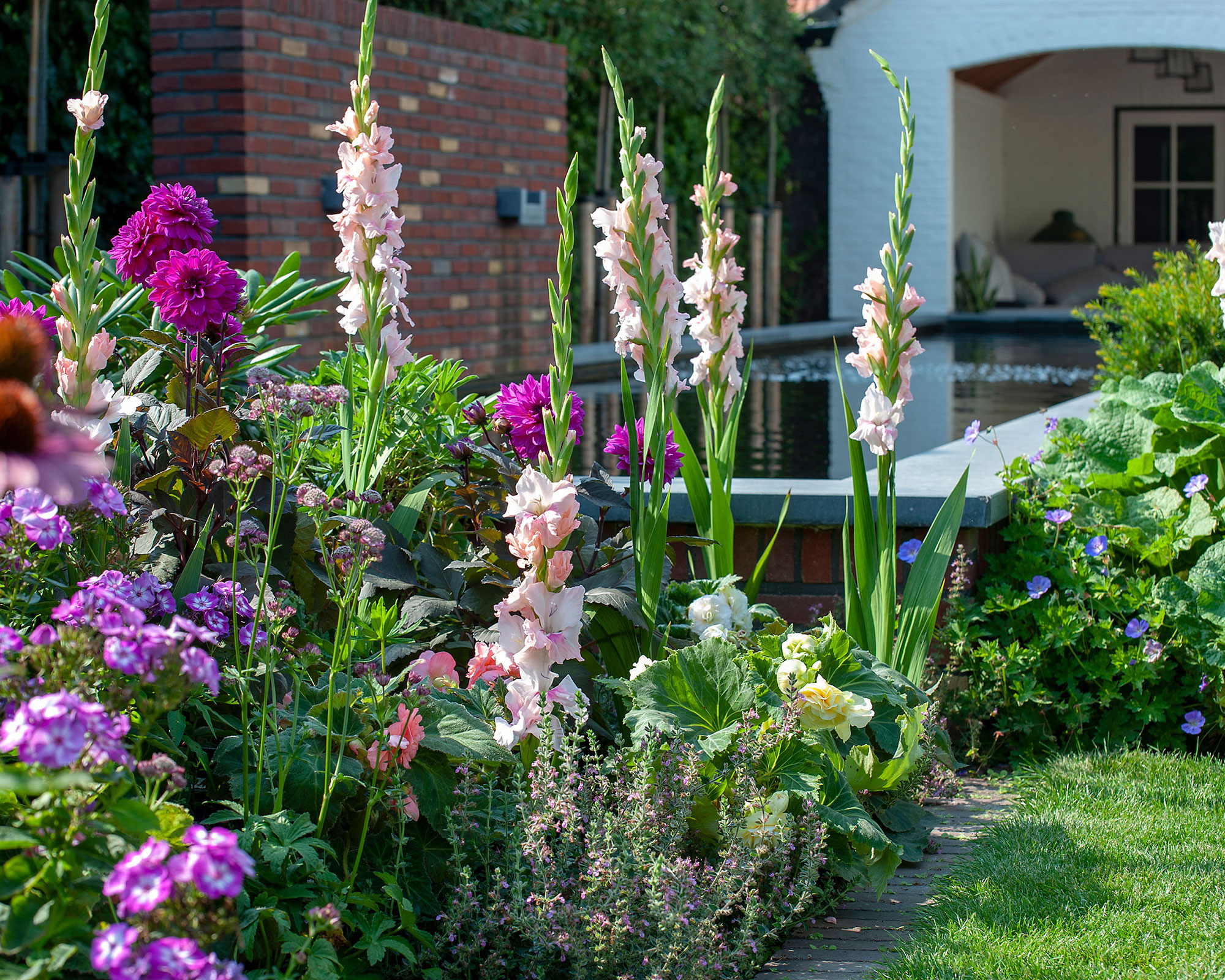
If you’re working with a small garden, an urban setup or a compact courtyard, you might be tempted to cram in as many different varieties of flowers as possible.
However, just like any living organism, plants need space to grow. And your flowers are no different.
‘Try to avoid overfilling your space as the plants will get quite large and will want the space to grow,’ Sally says.
7. Deter pests with eco-friendly initiatives
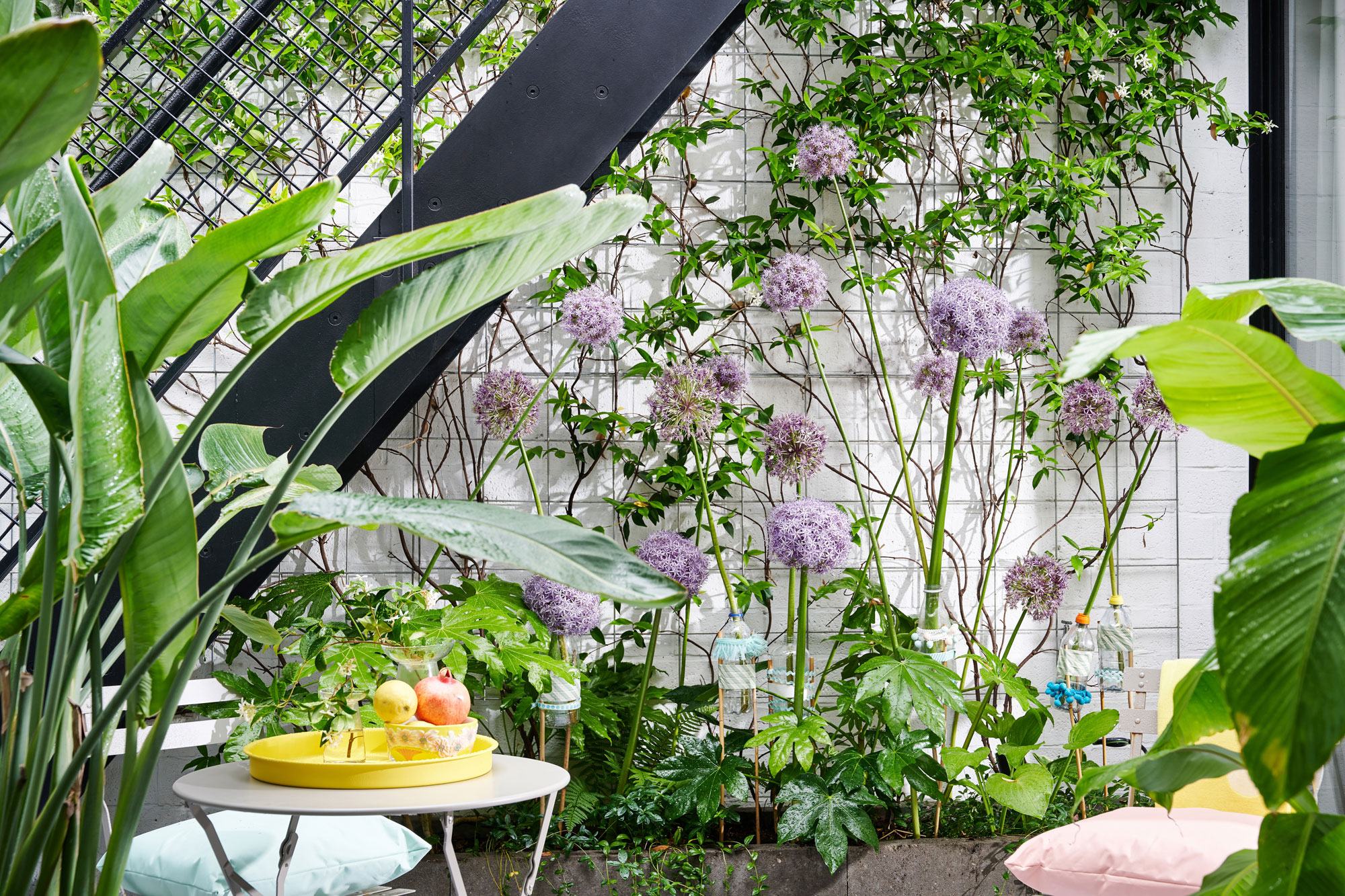
Along with protection from harsh weather conditions, your growing blooms will also need protection from pests, such as slugs.
Sally tells us, ‘One of the biggest challenges is keeping slugs off your young plants, it’s not easy – especially if you want to avoid using toxic slug pellets.’
However, sustainable living is on the rise. And there are many ways to keep your plants happy and healthy in an eco-friendly way. Sally’s top tip?
‘Surround young plants with crushed eggshells, crushed seashells, horticultural grit or sharp sand,’ she says. ‘This will deter them.’
8. Location, location, location
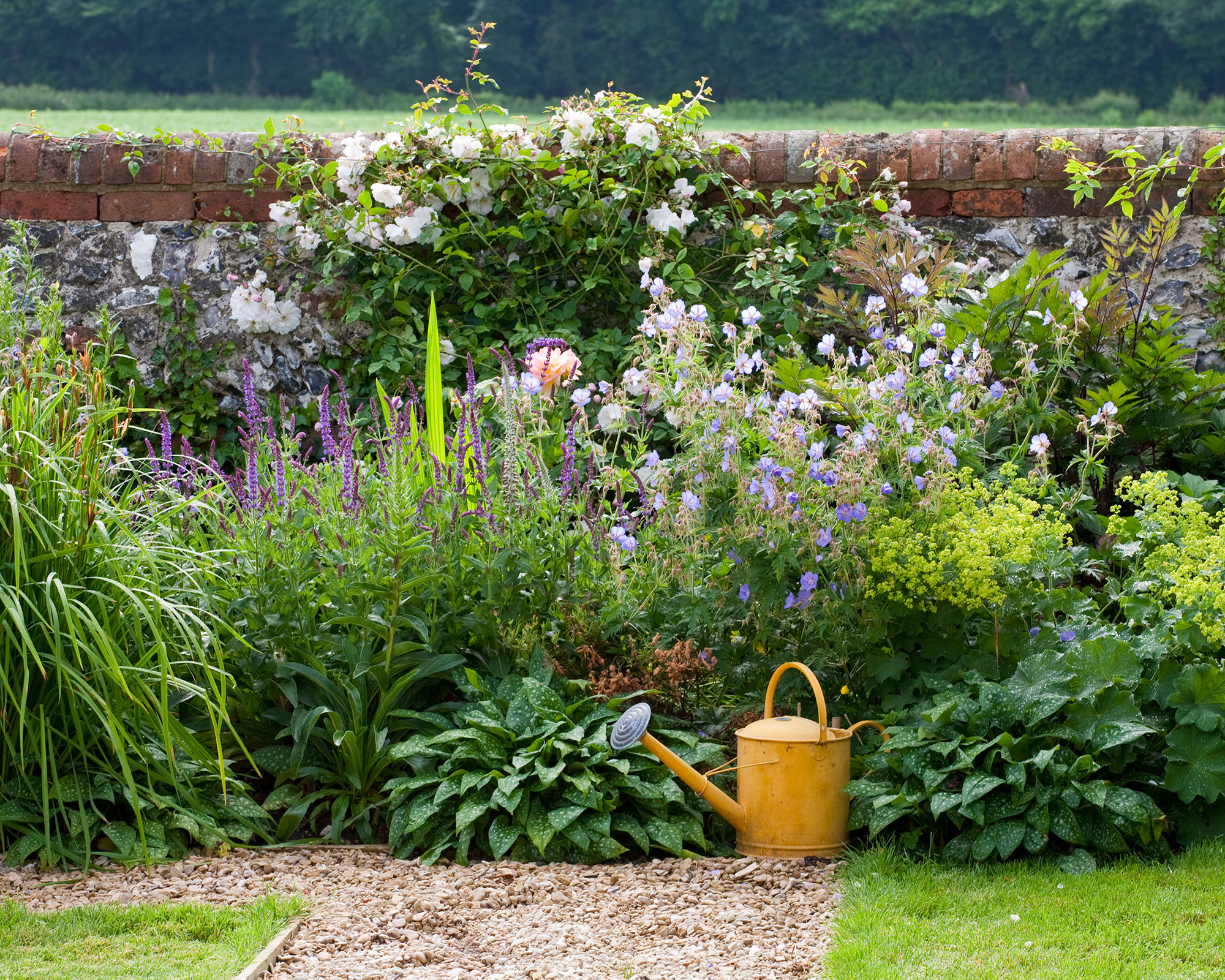
You wouldn’t choose your home without giving some serious thought to its location, right? And the same goes for choosing the spot to house your flowers.
After all, as Claire Brown of Plant Passion explains, ‘The vast majority of flowers for cutting need sun to grow. So choosing the right site is important.’
You only have to look at the best shady garden ideas to know that some plants thrive in sunless conditions. But many more flowers will bloom while under the gaze of the sun. So whatever outdoor space you have, choose your plants wisely.
9. Don’t just choose flowers based on looks
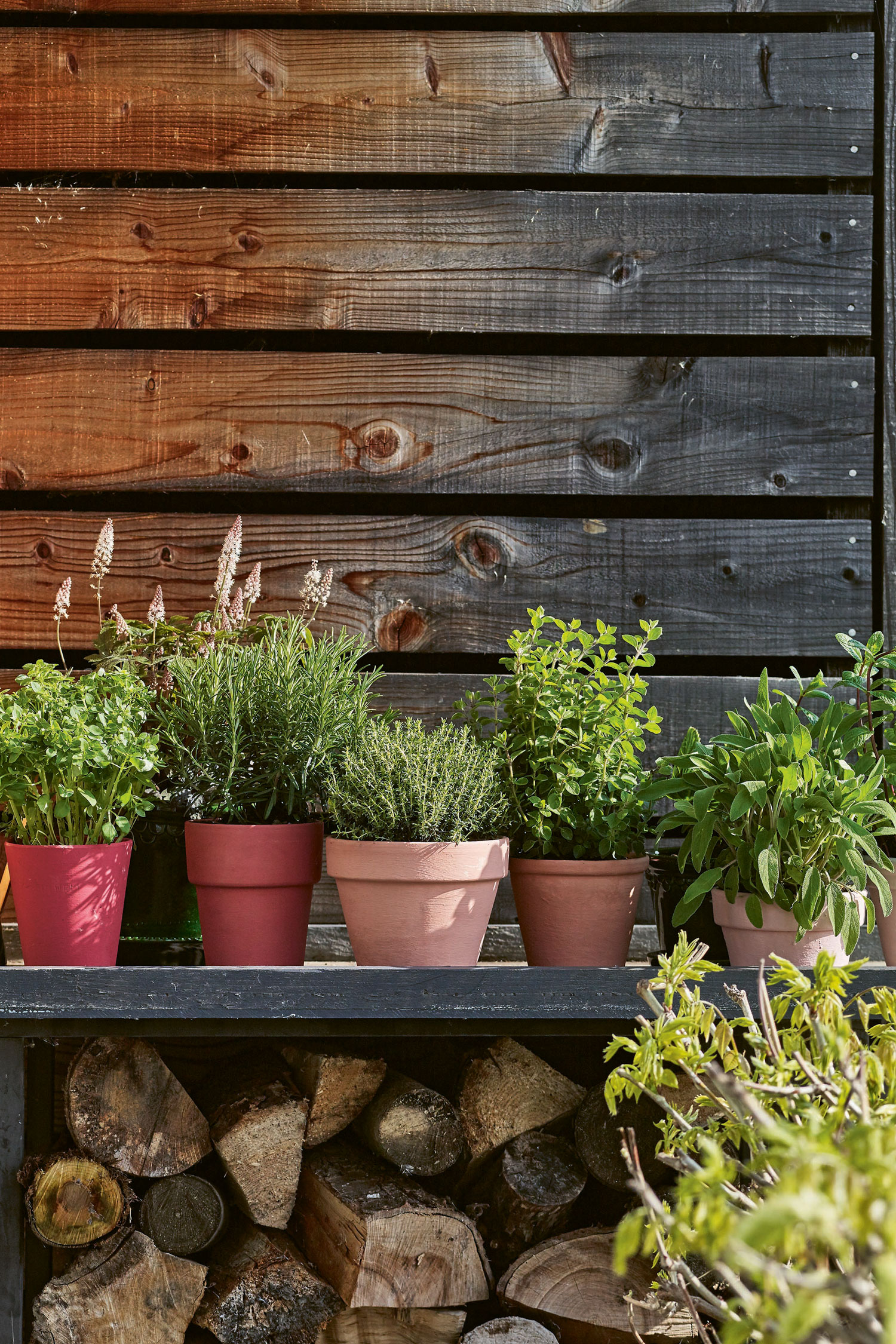
It’s hard not to judge a flower by its looks. However, when thinking about your cut flower garden, it’s also important to think about the other foliage and scent fillers.
‘While focal flowers are easily available from the supermarket or market, the fillers and scented foliages are better to grow yourself,’ Claire explains. ‘So umbellifers are great to add to your cut flower garden, and herbs such as rosemary and mints are great for adding into flowers, but also have a wonderful scent.’
Tick off two birds with one stone by adding an aroma-filled range of herbs to your garden with these small vegetable garden ideas.
10. Keep them in straight lines
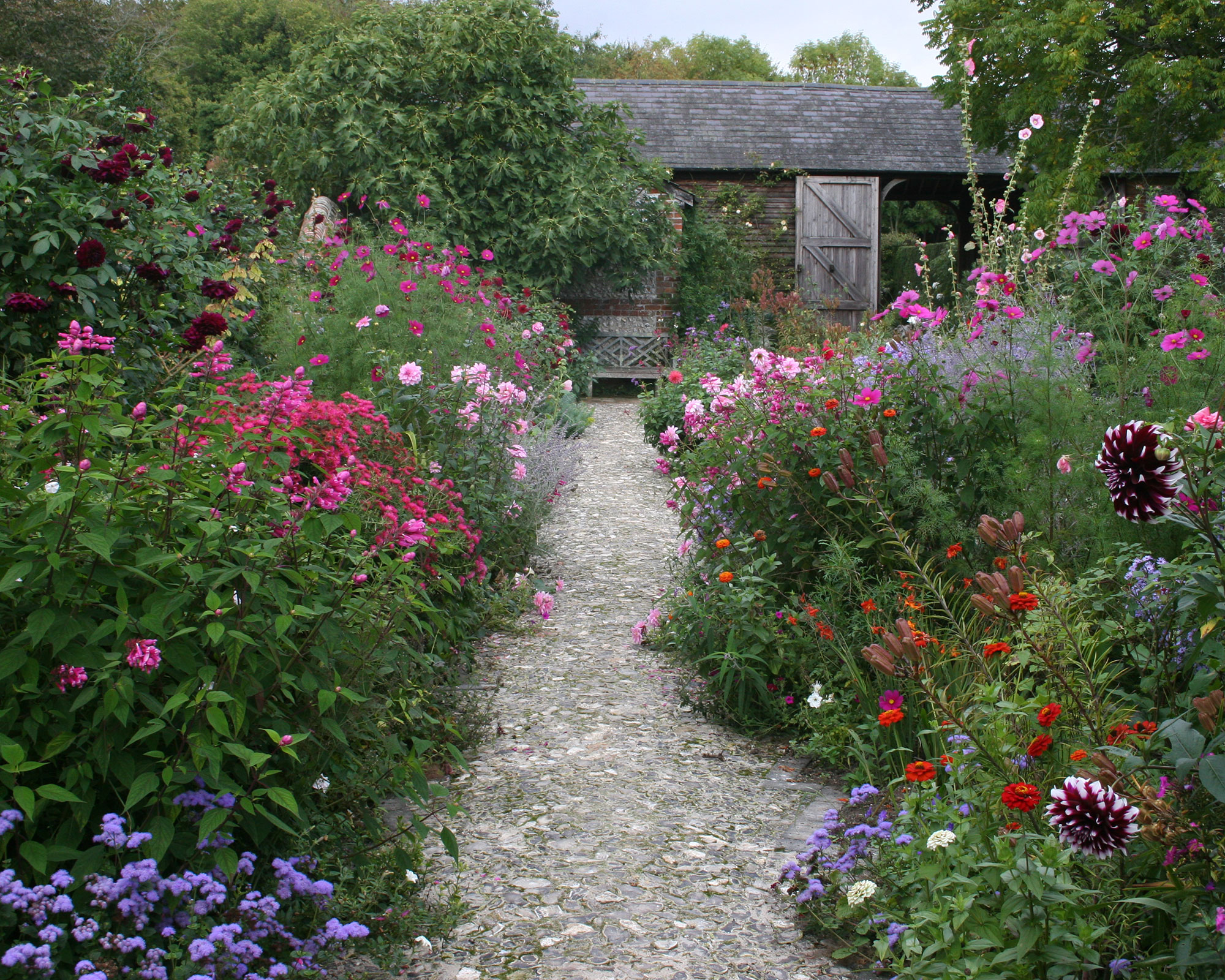
Want to reach your flowers easily? Then keep your flower garden in perfect working order by sowing your seeds in straight lines or uniformed pots.
Claire tells us, ‘Unlike garden borders you’ll need to be able to get in to cut your stems, and make it easy to get them as quickly as possible, so straight lines are the order of the day. This will also make it easy to water and support if needed.’
11. Decide what type of cutting garden you want

Just like the wonderful variety of flowers to choose from, you also have choice when it comes to the type of flower garden you are trying to create.
‘There are two types of cutting gardens,' explains Claire Belderbos of Belderbos Landscapes. The first is for those with enough space in their garden for a dedicated cutting garden, to produce as many blooms as possible. The second is merging the flowers into your existing planting beds. This may result in upsetting the balance of your curated borders.’
So before you start creating your cut flower garden, think about how best to utilize your space.
12. Use beds, if possible
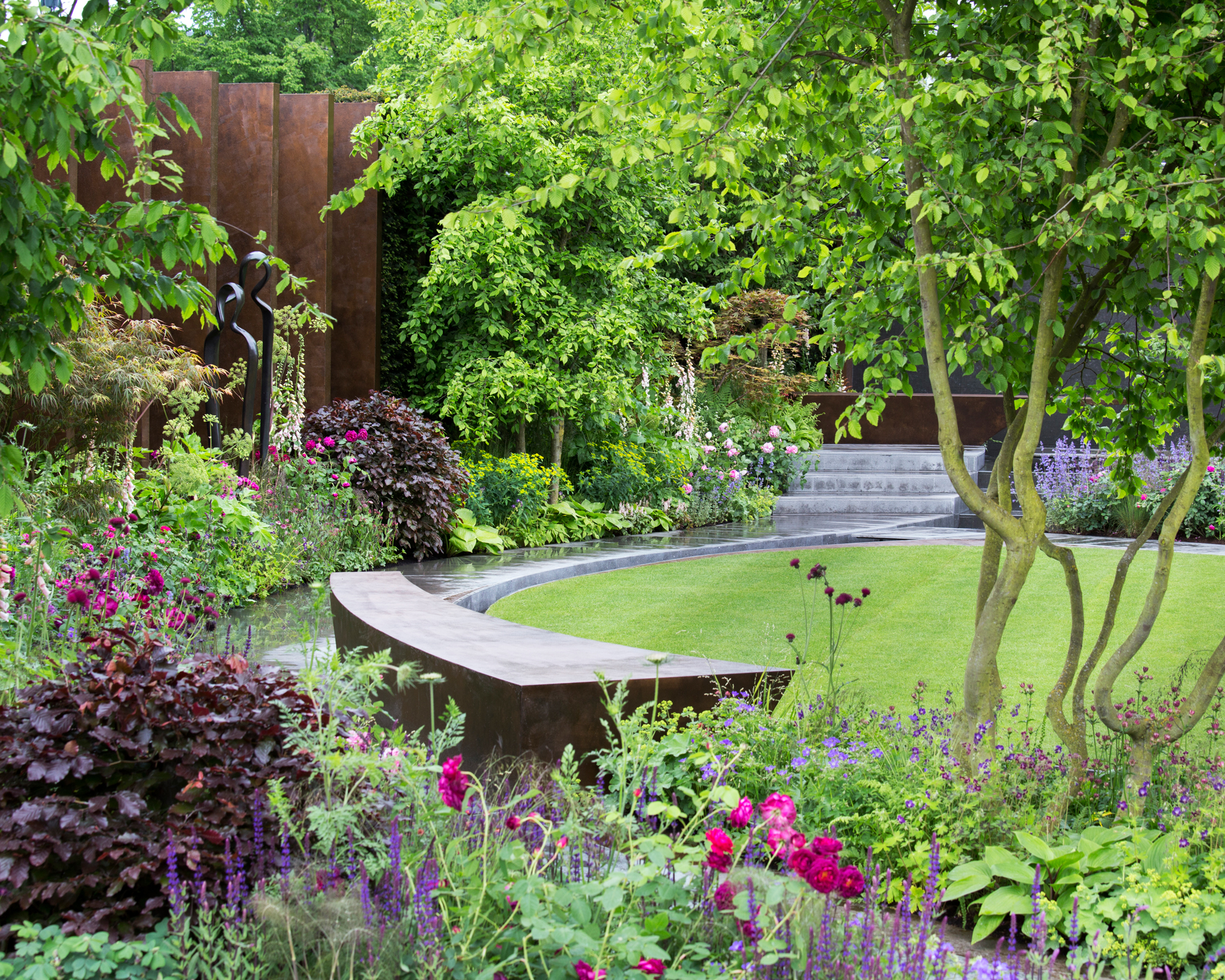
Remember we spoke about your blooms needing the right conditions to thrive? Well, one of the best ways to ensure your flowers grow – and keep growing – is to plant them in a flower bed.
But why is this? ‘Growing cut flowers in flower beds are usually healthier, happier and take less watering, ‘ Claire explains. ‘Planting in beds also means that if using your borders to grow cut flowers, a neighboring plant can replace its growing space, creating a good cutting equilibrium. Raised beds should not be discounted as more accessible if you have restricted mobility but don’t forget the plants will need additional feed and water.’
13. Separate perennials from annuals

Another trick to keep up your green-fingered sleeves? Separate out your perennial flowers from your annuals.
‘It is always good to separate perennials from annuals so you can keep the perennials where they are and change over the annuals each year,’ Claire explains. ‘Having annuals means you can try new plants each year which is fun and exciting. Perennials offer longer seasons of picking and you don’t need to bother re-seeding.’
Claire recommends planting both in blocks and closer together than the seed packets say. This way you’ll capitalize on space. But remember: ‘Make sure you plant taller varieties at the back so they do not trap the light from the smaller ones,’ Claire warns.
14. Consider your color palette
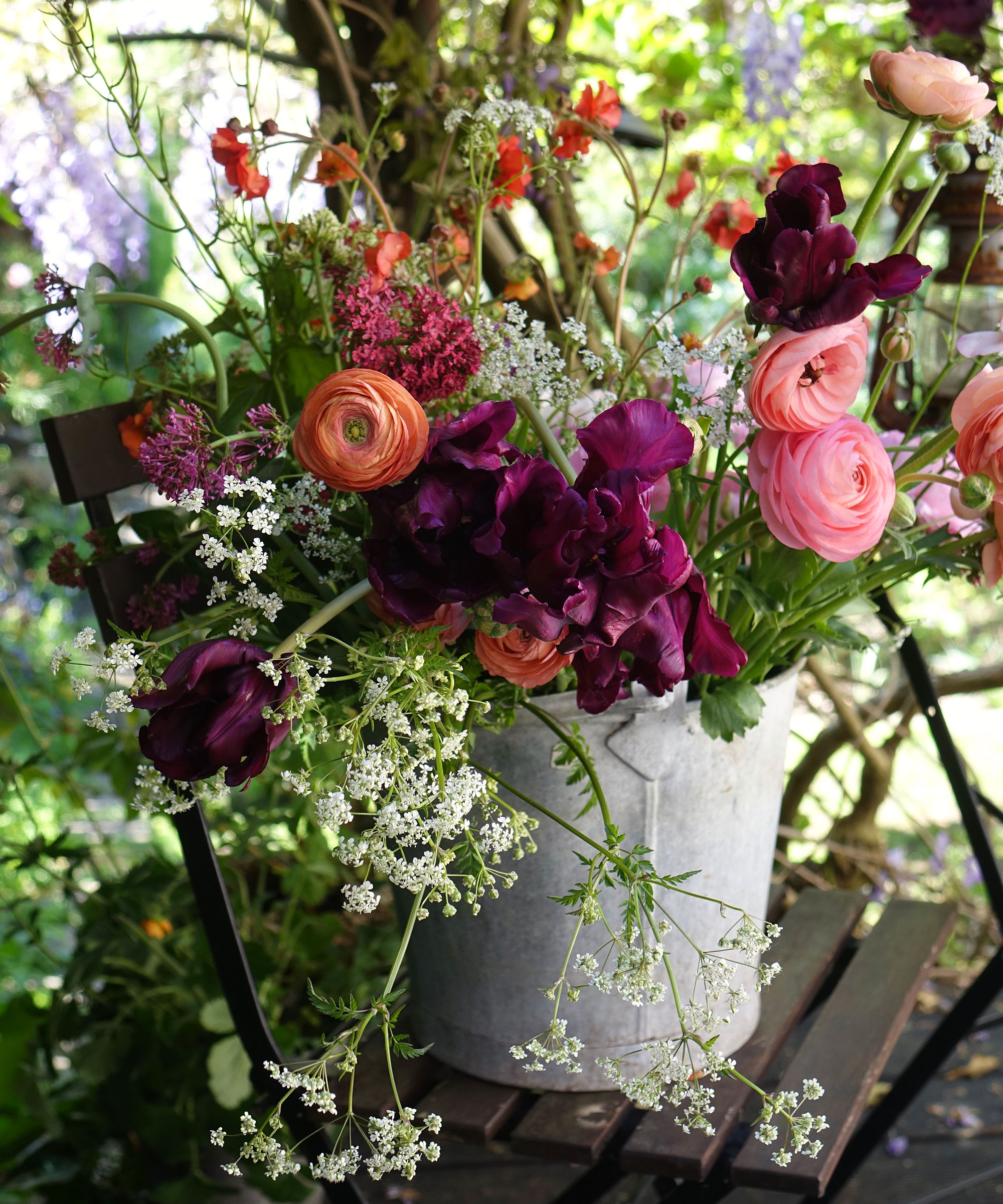
According to the top flower trends, color is back – and in a big way. But if you’re a fan of foliage more so than bright and beautiful hues, you can still tick off this trend. An easy way of creating a cut flower garden you'll love? Claire recommends thinking of the end product.
‘Think about the color palette you want to see in the vase,' Claire tells us. 'With this in mind, you want to pick three or four varieties that will blossom at the same time so you can build your bouquet as per the season.’ Claire adds, ‘These should have a variety of heights and shapes but all complement each other.’
15. Remember to plant shrubs
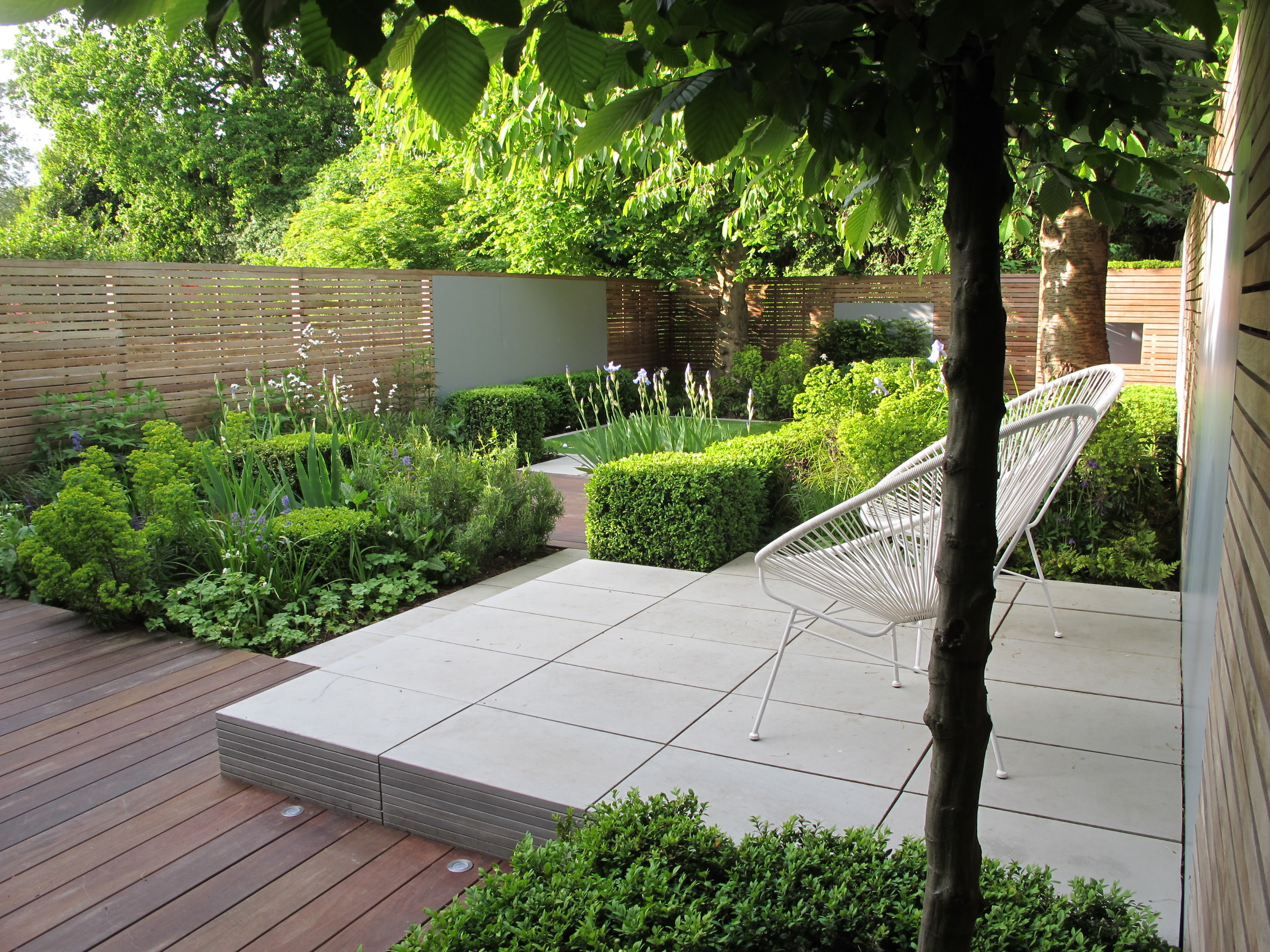
Along with adding herbs to your blooming floral display, think about the shrubs that will sit alongside them as they grow and are brought inside to sit in your vases. You only have to look at the supermarket shelves to see how florists add depth, texture and an extra hit of color. And that's by adding foliage to your bunch.
Designer Dan Bristow of landscape design studio, Studio Bristow, says, ‘Don't forget about flowering shrubs and trees too.’
According to our best plants for small gardens guide, Nassella tenuissima (which is more informally known as Mexican feather grass) and the boxwood are great ways to inject greenery into your outdoor space.
16. Support your flowers
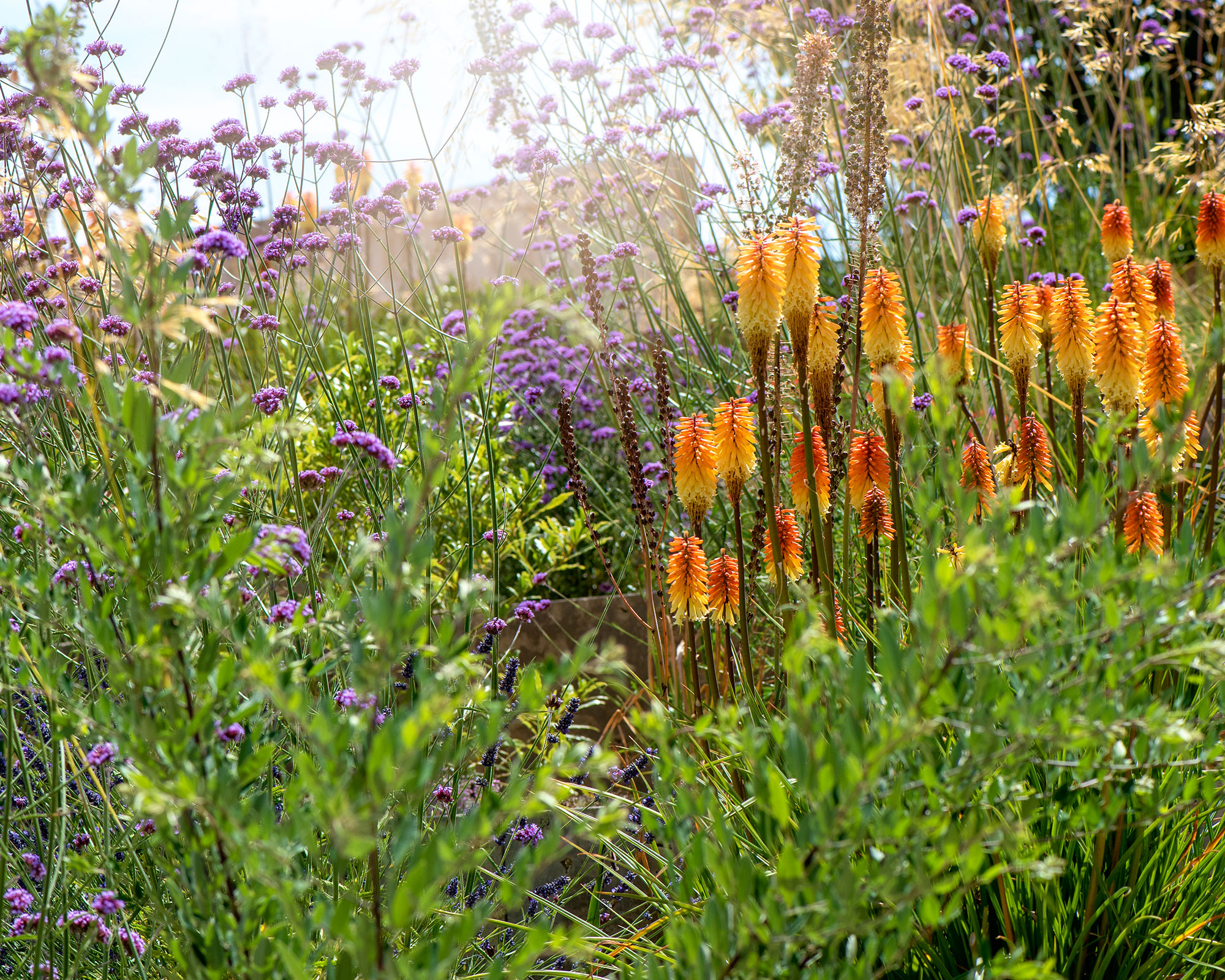
Support for your flowers is non-negotiable. `Especially if the blooms you have chosen are taller-flowering plants,' Dan says.
‘If you have space for a dedicated raised cut flower bed or beds, using steel reinforcing grid fixed 60cm above the ground really helps flowering stems grow straight and true,’ Dan explains.
Where should you start with a cut flower garden?
Sally Bastard from Sweet Pea Rosa says, ‘The first thing you need to do is create some space in your garden. It doesn’t need to be much even if you have a small area, you can grow some great cutting flowers. But it will need plenty of sunlight, so keep that in mind when planning your cut flower garden.
‘Clear your bed of any weeds and add in some peat-free compost. Depending on what time of year you start you will need to do different things. In winter you would cover this bed with cardboard until you have some plants ready for it. In spring you may sow some seeds directly into your bed. Cornflower, nigella and poppies are good for direct sowing. If it is later in the season I would recommend purchasing some young plants from your local garden centre and getting them straight in.'
What are the easiest cut flowers to grow?
Different flower varieties will grow differently depending on the environment you are working with.
However, according to Natalie Plumbridge, Horticulturist at the Royal Horticultural Society Garden Wisley, the general consensus is that there are three flowers to grow in your cut garden if you're looking for ease.
Natalie says, ‘When talking to visitors at RHS Wisley, the most commonly grown cut flowers are Dahlia, Sunflowers (Helianthus) and Sweet Peas (Lathyrus odoratus). However, many of the plants within your garden already can be used as cut flowers. Plants like Hydrangea, Caryopteris, Roses, even seed heads from Ornamental Grasses. All of these plants and many more can be found in many gardens and are great for cutting for flower arrangements.’
Becks is a freelance lifestyle writer who works across a number of Future's titles. This includes Real Homes, Top Ten Reviews, Tom's Guide, TechRadar and more. She started her career in print journalism at a local newspaper more than 8 years ago and has since then worked across digital and social media for food, fashion and fitness titles, along with home interior magazines. Her own interior style? She's big on creating mindful spaces in every corner of her home. If it doesn't spark joy or happiness, it has no place here. When she’s not writing, she’s reading and when she’s not reading, she’s writing.